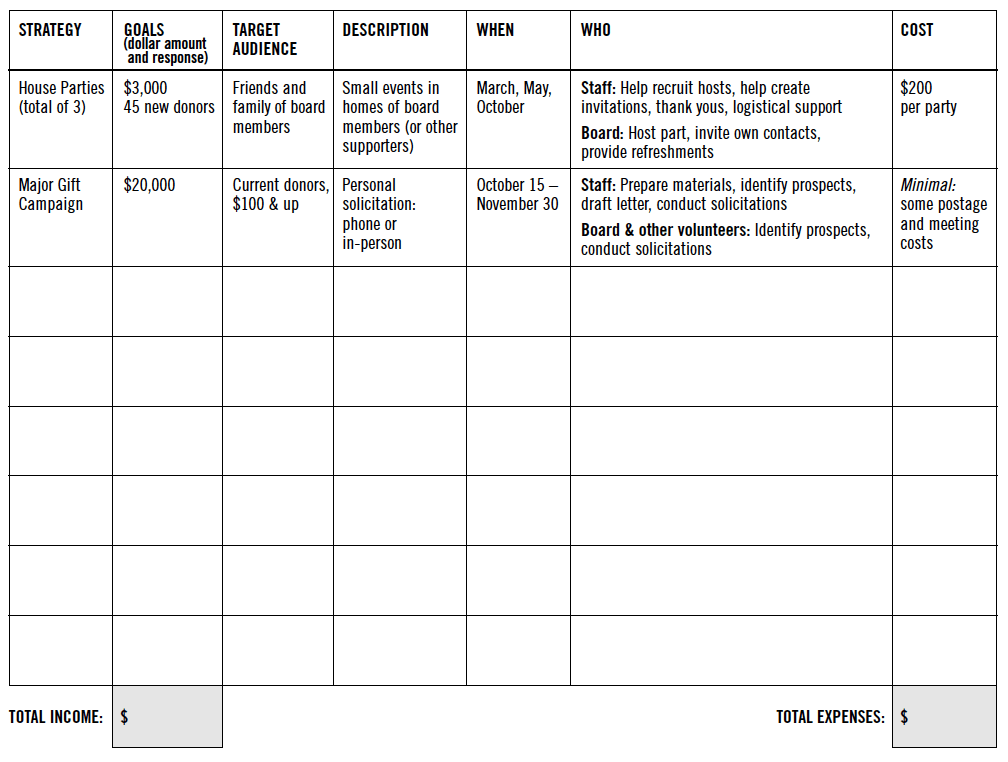
Editors’ note: This article, first published in print during Sep/Oct 2007, has been republished for Nonprofit Quarterly with minor updates.
Although fall isn’t the start of most organization’s fiscal years, perhaps as a remnant of our school-year schedules, it is a time when many of us gear up after summer holidays — often with renewed energy — for the busy fall fundraising season. One task facing those of us with fiscal years beginning on January 1st is the preparation of our annual fundraising plan.
This article presents a systematic way of creating an annual fundraising plan for your organization. The focus of this process (like the focus of the Grassroots Fundraising Journal) is on strategies for building a base of individual donors in order to create a reliable and repeatable source of income.
The six-step planning process this worksheet takes you through will help you create a plan that is based on the realities of your organization’s funding base, infrastructure, and fundraising team. We recommend you include both board and staff in creating your plans, along with anyone else who is key to implementing the plan. When the people who are expected to carry out the fundraising activities have participated in developing the plan, their commitment to it will be greater, boosting your chance of fundraising success.
Before calling together everyone you want to involve in creating the details, however, go through the steps here and gather whatever preliminary information will be needed to complete the plan. Then schedule a meeting of all the people who will be key to carrying it out, sending them a copy of the following worksheet pages with the information you have gathered.
You’ll see that Step 1 assumes you’ve already developed your budget for the coming year, or at least a draft that will be completed once you’ve figured out exactly how much money you can realistically raise.
It takes some time to think through a fundraising plan in this amount of detail, but once you’ve done this planning, all your fundraising tasks are clear and ready to be implemented.
STEP 1: GATHER THE NUMBERS
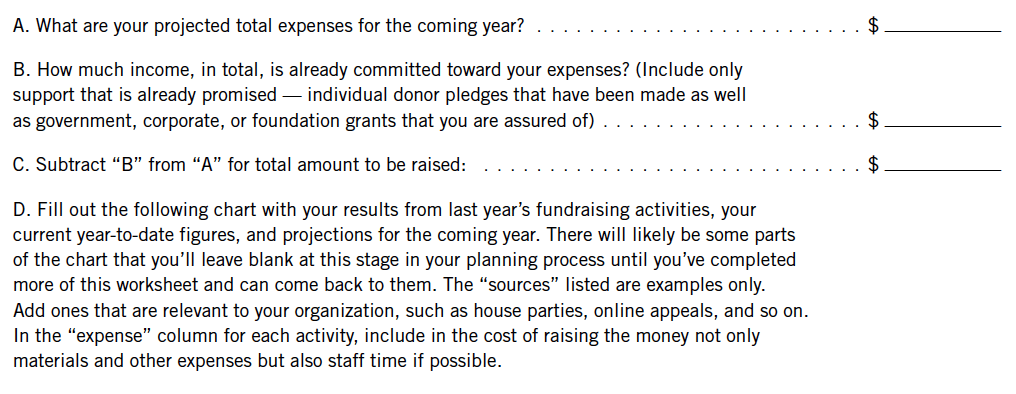
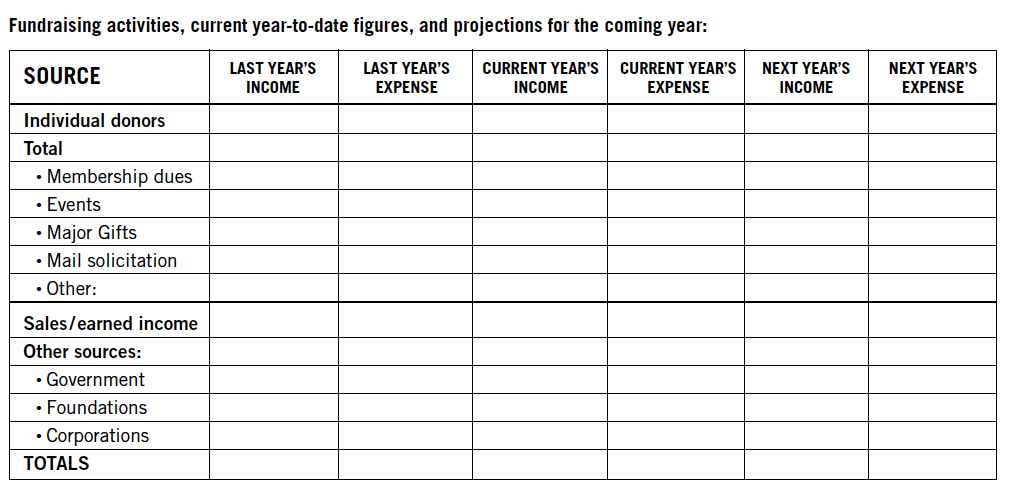
STEP 2: ANALYZE PAST FUNDRAISING EFFORTS
Sign up for our free newsletters
Subscribe to NPQ's newsletters to have our top stories delivered directly to your inbox.
By signing up, you agree to our privacy policy and terms of use, and to receive messages from NPQ and our partners.
(Use separate sheets of paper for the following questions for each source.)
- For each of the sources of income in the chart in Step 1, note briefly what has worked well
to bring in money that you want to do again. - What hasn’t worked? How can you improve or modify these strategies to make them work?
- What are new opportunities coming up that you want to take advantage of, such as a special
anniversary, a large organizing campaign, a new executive director?
(If you want to do a more detailed evaluation of your past fundraising efforts, including rate of
response, what worked, and what should change, see “Evaluating Your Individual Donor Program” by Stephanie Roth in Grassroots Fundraising Journal, Vol. 20 #6, (Nov-Dec 2001), available at www.grassrootsfundraising.org.)
STEP 3: DETERMINE YOUR AVAILABLE RESOURCES
Resources for fundraising include the people who will be involved in carrying out various fundraising tasks as well as money you’ll need to spend on staff time and materials. The expenses were included
in Step 1. The following chart will help you brainstorm who you can recruit to your fundraising team.
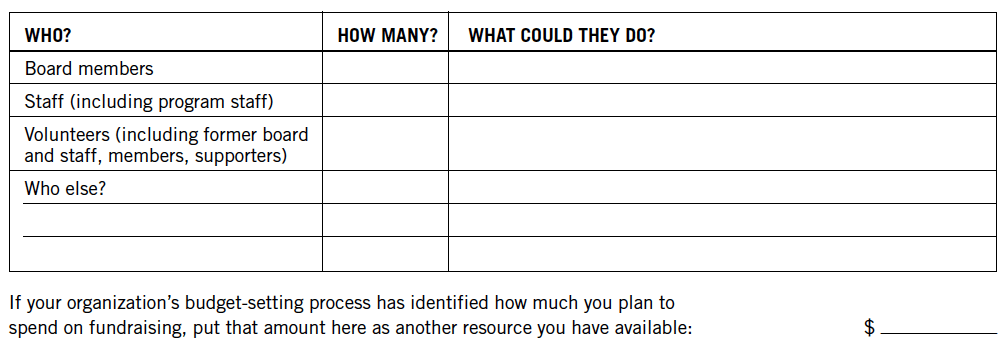
STEP 4: STRATEGIES — WHAT WILL YOU DO?
Now think about the fundraising strategies you’ll use to build support from individual donors —
and in some cases, from small businesses or corporations — from the point of view of getting new donors, renewing current donors, and upgrading current donors.
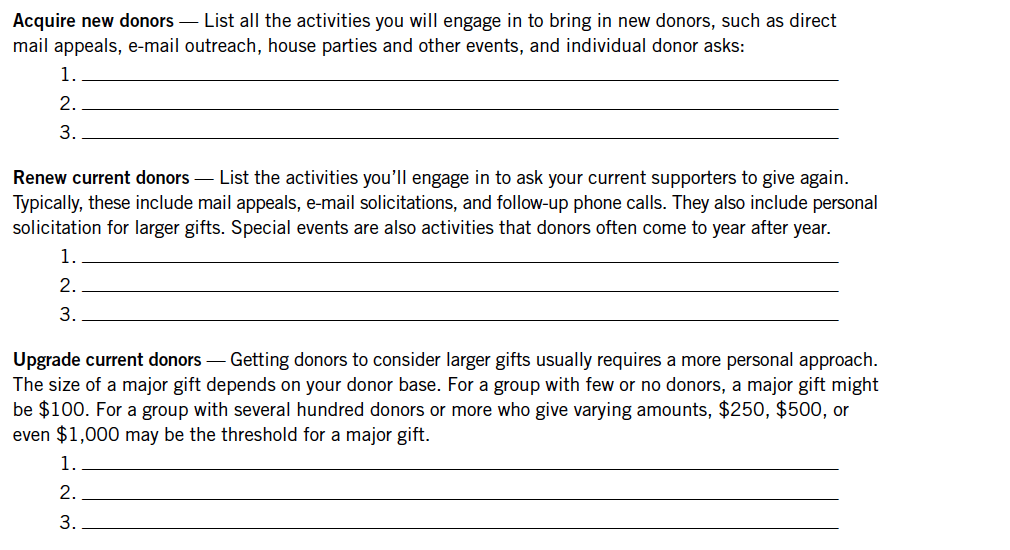
STEP 5: HAMMER OUT THE DETAILS
For each fundraising strategy that you plan to use, fill out a separate page with the following information:
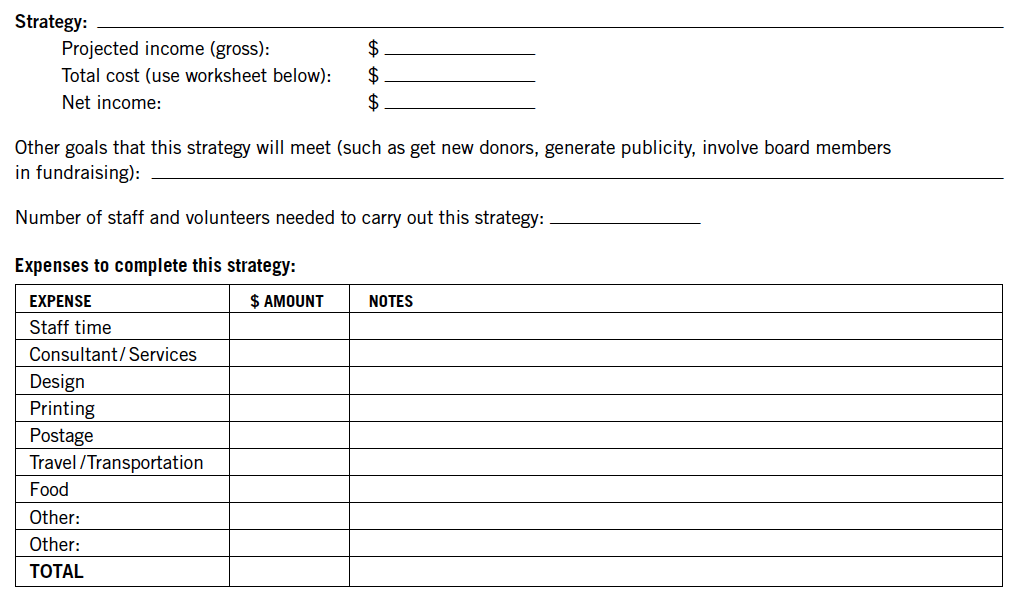
STEP 6: PUT IT ALL TOGETHER
Finally, you can pull together all your fundraising planning in one chart that will show what fundraising activities you are doing, how much you intend to raise, from whom, when, who will do what, and how much it will cost.
The following worksheet starts with a couple of sample activities to give you an idea of how to fill it out.
